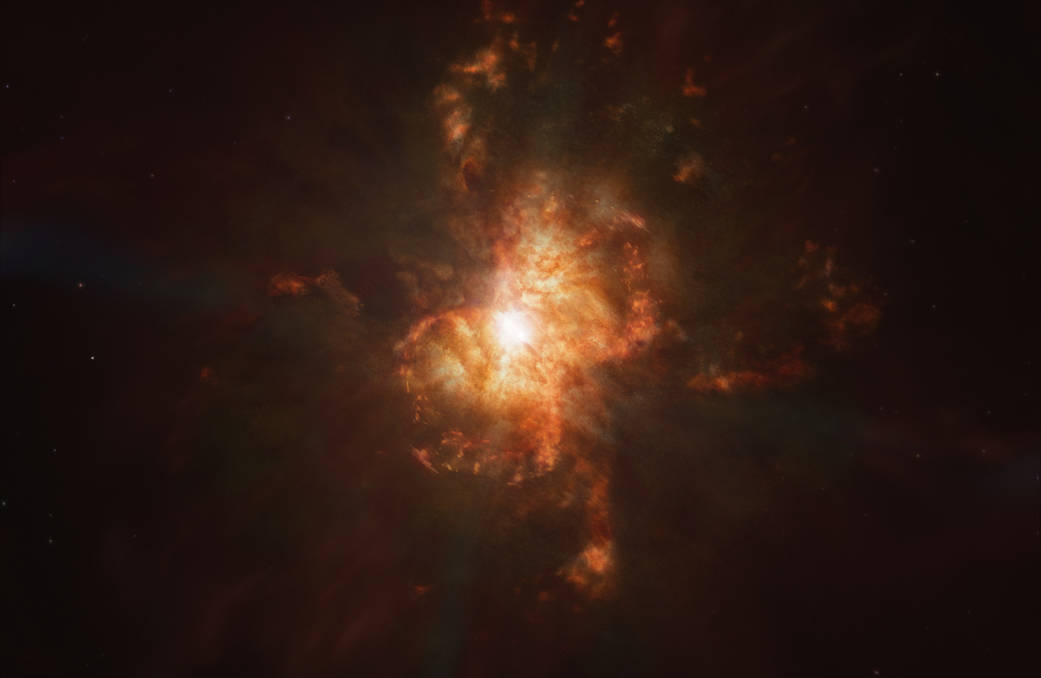Formation of the Southern Crab Nebula
为了庆祝美国宇航局哈勃太空望远镜于1990年4月24日发射29周年,天文学家拍摄了一张触角状南蟹状星云的照片。
这个星云的正式名称是Hen 2-104,位于南半球人马座,距离地球几千光年。它似乎有两个嵌套的沙漏状结构,由双星系统中一对旋转的恒星雕刻而成。这两颗恒星由一颗老化的红巨星和一颗烧毁的白矮星组成。红巨星正在脱落它的外层。一些喷射出的物质被伴星白矮星的引力所吸引。
结果是,这两颗恒星都嵌在一个扁平的气体盘中,气体盘在它们之间伸展开来。这条物质带限制了气体的流出,所以它只在圆盘的上方和下方加速。结果是一个沙漏状星云。
这张艺术家对南蟹状星云形成的印象说明了它的沙漏共享结构,这是由其中心的一对恒星——红巨星和白矮星——之间的相互作用产生的。这颗红巨星在其生命的最后阶段,也就是它作为白矮星的最后几年,正在剥离它的外层。
In celebration of the 29th anniversary of the launch of NASA’s Hubble Space Telescope on April 24, 1990, astronomers captured an image of the tentacled Southern Crab Nebula.
The nebula, officially known as Hen 2-104, is located several thousand light-years from Earth in the southern hemisphere constellation of Centaurus. It appears to have two nested hourglass-shaped structures that were sculpted by a whirling pair of stars in a binary system. The duo consists of an aging red giant star and a burned-out star, a white dwarf. The red giant is shedding its outer layers. Some of this ejected material is attracted by the gravity of the companion white dwarf.
The result is that both stars are embedded in a flat disk of gas stretching between them. This belt of material constricts the outflow of gas so that it only speeds away above and below the disk. The result is an hourglass-shaped nebula.
This artist’s impression of the formation of Southern Crab nebula illustrates its hourglass-shared structure, that has been created by the interaction between a pair of stars at its center: a red giant and a white dwarf. The red giant is shedding its outer layers in the last phase of its life before it too lives out its final years as a white dwarf.
Image Credit: ESA/Hubble, M. Kornmesser

